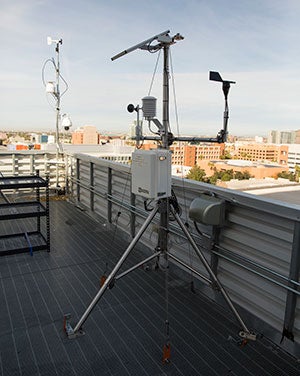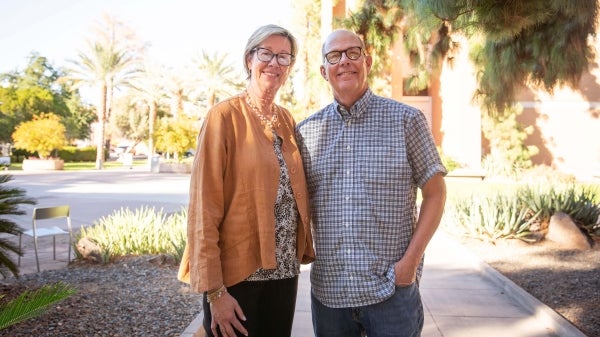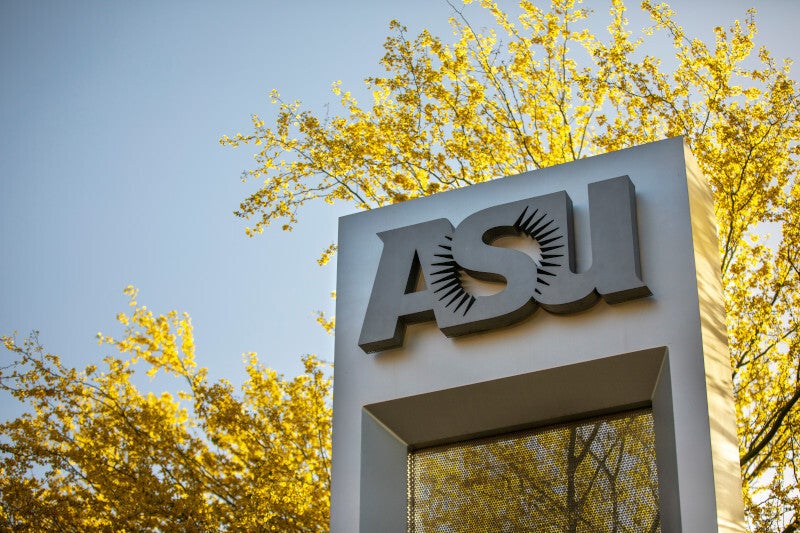ASU website provides precise snapshot of local weather, available to the public

Researchers and weather-watching enthusiasts can now tap into local meteorological data gathered by the Center for Negative Carbon Emissions at Arizona State University.
The center’s team has installed a weather station atop the seven-story building where its laboratory is located on ASU’s Tempe campus.
The station is equipped with an array of sensors and other components that monitor and measure temperature, humidity, air pressure, wind speed and direction and light intensity around its location.
The data — going back to March 2016 — is updated monthly and posted on the center’s website, from which the information can also be downloaded.
“It provides a neat, precise, archived snapshot of the meteorological date for this area,” said Allen Wright (pictured above), the executive director of the center operated by the School of Sustainable Engineering and the Built Environment, one of ASU’s Ira A. Fulton Schools of Engineering.

The monitoring station atop Interdisciplinary Science and Technology Building 4 on ASU’s Tempe campus measures an array of weather conditions. Photo by Pete Zrioka/ASU
The center’s research staff uses the information to look for correlations between weather conditions and the performance efficiency of the air-capture devices in its lab.
The center focuses on developing and implementing the next generation of carbon-management technologies to help reduce the atmospheric concentrations of carbon dioxide that can negatively impact climate change and environmental health.
But Wright said the information provided by the weather station can also be helpful to other researchers doing experiments involving the effects of weather conditions on various materials, processes or systems.
The data may also be interesting to many amateur meteorologists and hobbyists who might want to compare the station’s readings with those from small home weather stations, he said.
For more information, e-mail cnce@asu.edu.
Top photo: Allen Wright (foreground) and Yun Ge check on the weather station used by researchers at ASU’s Center for Negative Carbon Emissions. Wright is the center’s executive director. Ge is a software engineer on the research team. Photo by Pete Zrioka/ASU
More Science and technology

How a childhood passion led Jim Bell to being named an ASU Regents Professor
In the early 1970s, in a rural town in the smallest state in the U.S., a young boy in elementary school began to imagine the wonders of space travel.Jim Bell sat in the living room of his family’s…

Alum's journey to leadership shows the power of lifelong learning
In 1976, Kathy King was among a minority when a high school teacher advised her to pursue chemical engineering at Arizona State University.“Mechanical and electrical engineering were popular, but I…

3 ASU faculty members earn highest honor for early-career scientists, engineers
Three faculty in The College of Liberal Arts and Sciences at Arizona State University have been awarded the Presidential Early Career Award for Scientists and Engineers, or PECASE, by former…